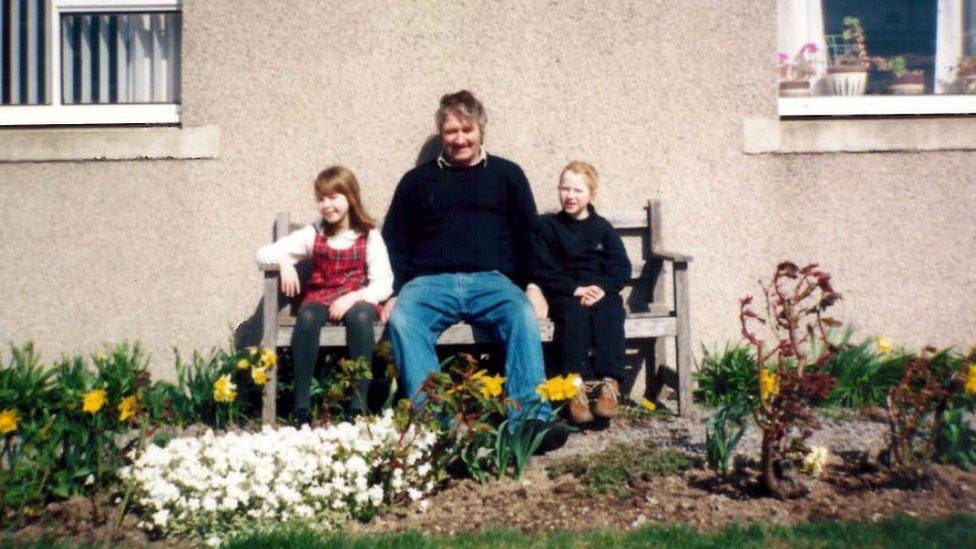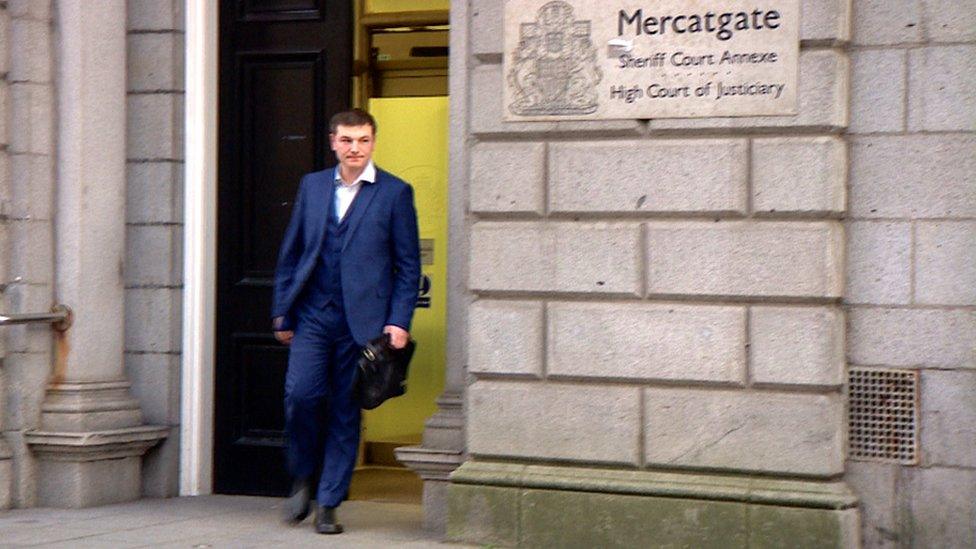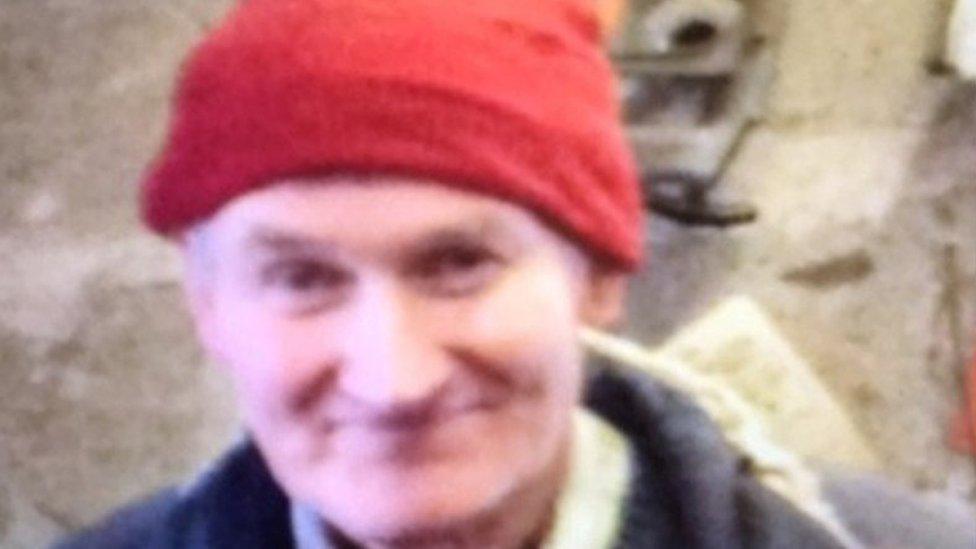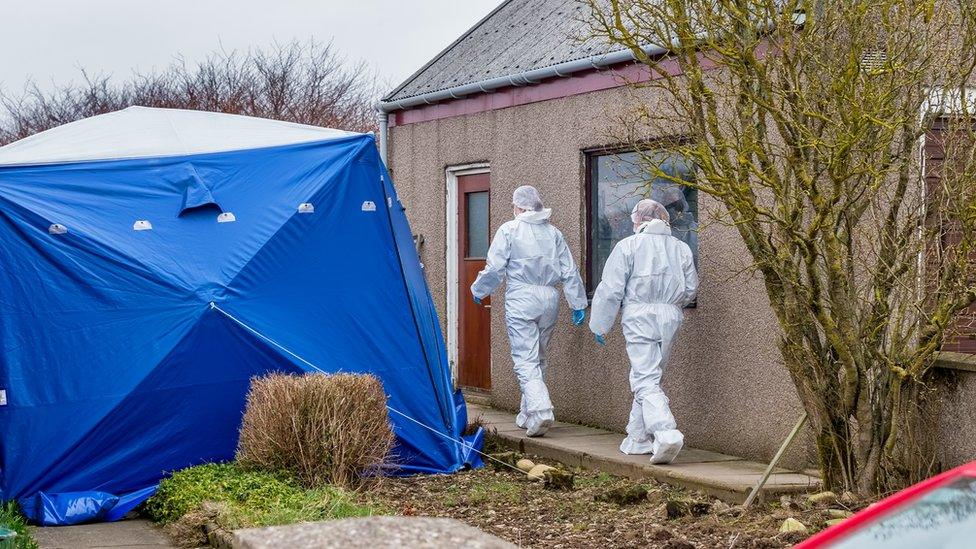The 'accidental death' that was a brutal murder
- Published

Brian McKandie lived at the cottage most of his life
The death of Brian McKandie was thought to be the result of a fall - until a pathologist opened his body bag several days later and immediately suspected something sinister.
Those suspicions sparked a major investigation, and ended with his killer being jailed for a minimum of 21 years for the "brutal" murder.
The 67-year-old's body was found in his cottage near Rothienorman in March 2016.
His home was heavily blood-stained but police called to the scene thought he may have fallen outside, hit his head, and then succumbed to his injuries indoors.
As it was not regarded as a crime scene, full forensic protocols to protect evidence and prevent contamination were not put in place.
Mr McKandie had been found on the Saturday.
However, everything started to change the following Tuesday.

The 67-year-old's body was found in 2016
This was when forensic pathologist James Grieve first saw the body.
'Not what I was expecting'
Prof Grieve had been asked to look at what was considered to be the "relatively routine" death of Mr McKandie.
The pathologist told the High Court in Aberdeen: "When I initially approached the body and I opened the body bag I was aware he had some very severe head injuries which gave me anxiety, so I sought the advice of the CID.
"This was not what I was expecting.
"It was very, very evident that this had to be regarded as suspicious.
"I halted the process because of what I saw on Mr McKandie's head, which was severe injuries."

Prof James Grieve found at least 15 separate blows to the head
He said photos of the scene did not allay his fears, and indeed made him "very, very concerned".
The photos - which included blood on walls - were also sent to a blood spatter analysis expert.
The full post-mortem examination was carried out two days after Prof Grieve's initial viewing of Mr McKandie's body.
'Suspend credibility'
Prof Grieve found there had been at least 15 separate blows to the head.
He said he would have to "suspend any credibility" to explain the injuries by saying someone had fallen over again and again.
Forensic scientist Kenneth Brown said when he initially saw photos of various blood stains at the cottage several days after Mr McKandie's death, he also did not think he had fallen and hit his head, and arranged to go to the cottage.

Steven Sidebottom became a suspect in 2017
His findings suggested Mr McKandie had been struck more than once outside the cottage.
He said the pensioner could then have been dragged into the hallway.
Massive investigation
Mr Brown said cast-off blood patterns in the hall suggested Mr McKandie had been struck "multiple" times there.
A murder inquiry was launched on Friday 18 March 2016. Police had briefly held off issuing a public appeal until Mr McKandie's brother William - who was on a flight home from Australia - was informed in person of the criminal development.
The massive investigation that followed involved speaking to hundreds of people and trawling CCTV footage in the search for clues.

Brian McKandie had been caught on CCTV in a bank the day before he was found dead
It was a "trace, investigate, eliminate" strategy.
There were also Crimewatch television appeals, and a £10,000 reward was offered.

The case was featured on the BBC's Crimewatch series
Several weeks after Mr McKandie died, police found about £200,000 inside sweet and biscuit tins and shoeboxes in the cottage,. The mechanic had apparently stored away the cash over the years while working cash-in-hand from the garage at his home.
Steven Sidebottom lived nearby, had known Mr McKandie all his life, and had shared police social media appeals for information.
He had been spoken to by police during 2016.
No comment
In January 2017 he became a suspect due to what were viewed as discrepancies in what he had told police about being outside Mr McKandie's home in the days before he was attacked.
The court heard that evidence emerged he possibly had thousands of pounds around the time of the murder, and lavished gifts on his student girlfriend.
He was charged in February 2017.
Forensic scientist Mr Brown said items relating to Sidebottom, such as his home, car and clothing, were not examined until at least nine months after Mr McKandie's death.

Forensic scientist Kenneth Brown said no DNA links between the two men were found
Ultimately, no DNA traces were found linking the two men.
He said the "passages of time" could have an impact on finding DNA.
Circumstantial jigsaw
Advocate depute Iain McSporran, prosecuting the case, said the assailant could have been wearing gloves, or changed clothes.
However defence counsel Ian Duguid QC said the negative conclusions could all be explained if Sidebottom had simply not been involved in the murder of Mr McKandie at all.

Brian McKandie's death was described as brutal
The main elements of the prosecution case included Sidebottom suddenly having a substantial amount of money, and evidence that his mobile phone could have been in the area of Mr McKandie's home around the time he was believed to have been killed.
There was also evidence of Sidebottom offering a friend £500 to drive him so he could "do someone in" to get money. However, Graeme Gray said he did not do the "job" as it sounded "too risky".
In his closing charge to the jury, Lord Uist said "errors" had made by the police at the outset, when called to the cottage.
But no-one now disputes that it was actually the brutal murder of a popular, friendly, obliging man.
- Published1 February 2019

- Published6 March 2019

- Published19 March 2016
